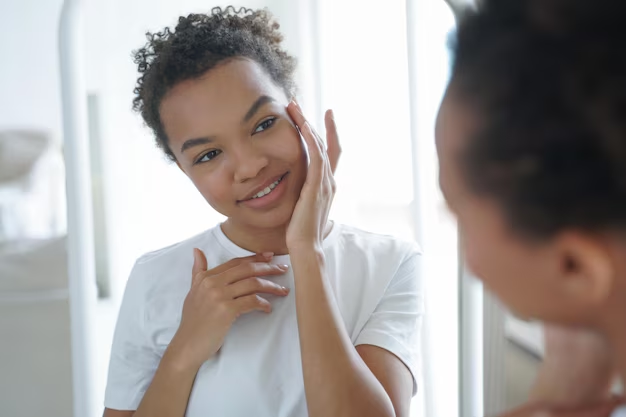Understanding Vitiligo: Can It Be Cured?
Imagine waking up one morning and noticing patches of lighter skin appearing on your arms or face. For millions of people globally, this isn't just a scenario but a reality that marks the onset of vitiligo. This condition can stir myriad questions and concerns, chief among them being: Is vitiligo curable?
Navigating through the nuances of vitiligo can be overwhelming. This article aims to demystify vitiligo, exploring whether a cure is attainable while offering insights into management strategies and emerging research that holds promise.
What Is Vitiligo?
Vitiligo is a chronic skin condition characterized by the loss of pigmentation, resulting in white patches across various parts of the body. This happens when the melanocytes, the cells responsible for producing skin pigment (melanin), become dysfunctional or die.
Common Areas Affected
- Face and Hands: Often the first and most noticeable areas.
- Genitals: Vitiligo can affect sensitive skin areas.
- Folds of the body: Such as the armpits or groin.
Who Is Affected?
Vitiligo can affect anyone, regardless of age, gender, or ethnicity. However, it is more noticeable in people with darker skin. Typically, symptoms begin to appear before the age of 30.
Is There a Cure for Vitiligo?
There's a straightforward answer to this: as of now, there is no permanent cure for vitiligo. However, significant advancements in treatment can help restore color to the affected skin and improve the appearance.
Current Treatment Options
Topical Treatments: These include corticosteroid creams and calcineurin inhibitors, which help reduce inflammation and may slowly restore pigment.
Phototherapy: Narrowband UVB therapy is a common practice that involves exposing the skin to ultraviolet light to stimulate pigmentation over time.
Surgical Options: Skin grafting and micropigmentation may be considered in certain cases to achieve uniform skin color.
Depigmentation Therapy: This involves depigmenting the unaffected skin to match the lighter areas, more suitable for extensive vitiligo.
Each treatment varies in effectiveness, depending on factors such as the extent of vitiligo, location, and individual response.
Holistic Approaches
Apart from medical treatments, embracing a holistic lifestyle focusing on stress reduction and dietary modifications may help manage vitiligo better:
- Stress Management: Since stress can exacerbate vitiligo, practices like yoga and meditation may help.
- Diet & Nutrition: Some anecdotal evidence suggests certain dietary elements, such as a diet rich in antioxidants, could support overall skin health.
Exploring Emerging Research and Innovations
Ongoing research offers hope for more effective management or potential breakthroughs in curing vitiligo.
Promising Treatments in Development
- JAK Inhibitors: These small molecules can block the pathways that lead to immune system attacks on melanocytes.
- Cellular Therapies: Stem cell therapy and cultivating melanocytes to restore pigment hold potential.
- Gene Therapy: Research is underway to understand genetic mutations in vitiligo, opening doors for genetic intervention.
Understanding the Psychological Impact
Vitiligo is more than a physical condition—it profoundly affects mental and emotional well-being. Social stigma and the visible nature of vitiligo can lead to:
- Low Self-Esteem: The drastic change in appearance may impact self-image, especially in social or public settings.
- Emotional Distress: Feelings of depression or anxiety can arise from societal pressure or misunderstanding of the condition.
Coping Mechanisms
- Support Groups: Connecting with others going through similar experiences can provide comfort and share coping strategies.
- Therapy and Counseling: Professional help can be vital in dealing with the psychological ramifications.
- Education & Awareness: Raising awareness and educating peers can combat stigma and foster a supportive environment.
Empowering with Knowledge & Acceptance
Living with vitiligo involves embracing both physical and emotional journeys. While a cure remains elusive, understanding and acceptance can enrich lives in unexpected ways.
Building a Support Network
Leaning on family, friends, and community organizations can be invaluable. Sharing experiences fosters understanding and emotional healing, emphasizing that the fight against vitiligo is not one to be faced alone.
Mindful Acceptance
Embracing the uniqueness and beauty in diversity can transform one’s perspective on vitiligo. Fostering self-compassion and focusing on positive attributes beyond skin appearance empowers individuals to lead fulfilling lives.
In the face of unanswered questions about a cure, the journey with vitiligo can still be hopeful and empowering. With developing treatments and a growing awareness, individuals affected by vitiligo are shaping their narratives with resilience and courage.
Key Takeaways 🎯
- No Cure Yet: Vitiligo doesn't have a permanent cure, but treatments can manage symptoms.
- Diverse Options: Explore topical treatments, phototherapy, and surgical options for pigmentation.
- Holistic Care: Complement medical treatment with stress management and nutritional support.
- Psychological Support: Engage in therapy, support groups, and advocacy for mental well-being.
- Hope on the Horizon: Keep an eye on research developments like JAK inhibitors and gene therapy.
By staying informed and connected, you can navigate vitiligo with strength and optimism, no matter where the journey leads. 🌟
